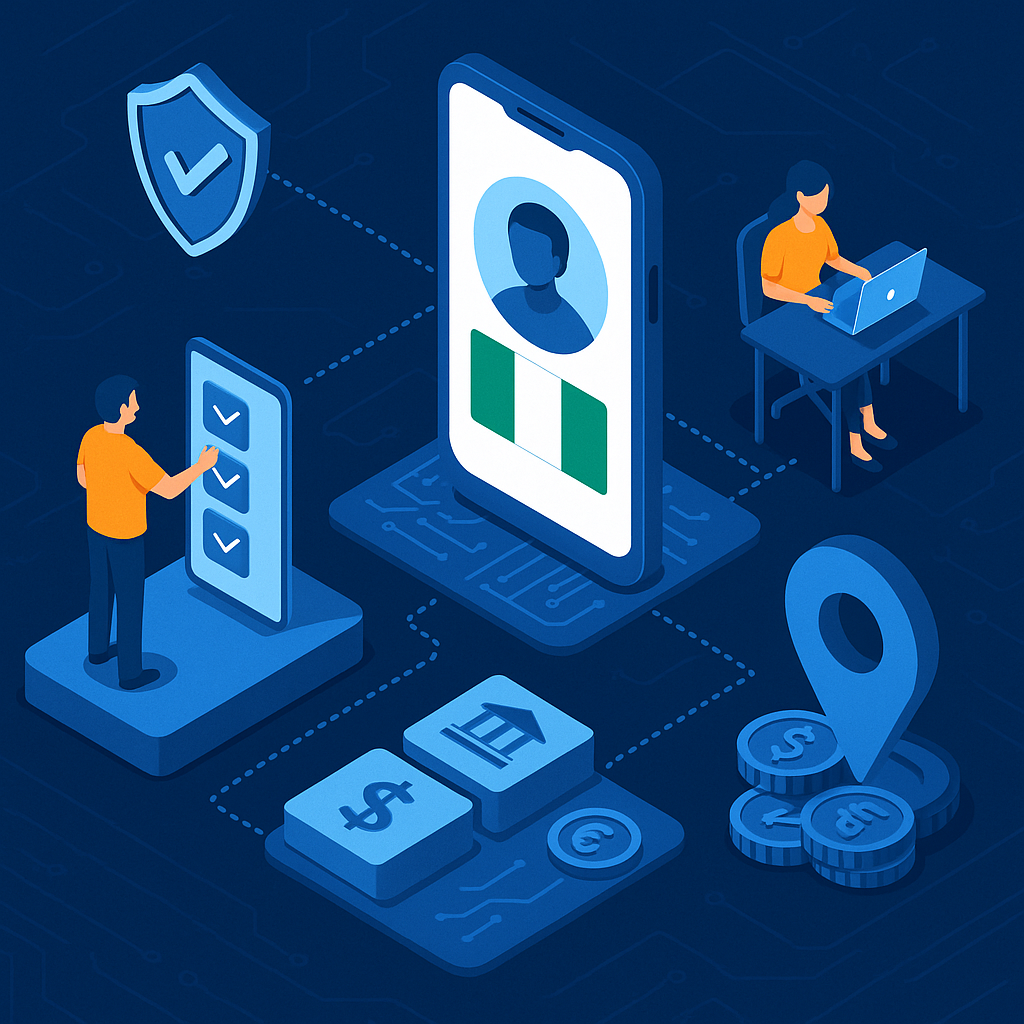Imagine this: You’ve got a great fintech app idea. Something that can change lives, especially for the 40% of Nigerians who still don’t have access to basic financial services. But here’s the catch — most fintech apps fail because they forget one thing:
Real people don’t want complicated, confusing tech. They want something simple, trustworthy, and easy to use.
So, how do you build an app that actually reaches the women in the North, the farmers in the villages, and the market traders who don’t trust banks?
That’s exactly what we’ll unpack here — the real steps you need to launch a fintech app focused on financial inclusion in Nigeria.
Why Financial Inclusion Is Still a Massive Challenge in Nigeria
First, let’s get real. Nigeria’s fintech scene is booming — over 200 startups, billions in investment, and millions of active users. Sounds great, right?
But here’s the truth: Over 40% of Nigerians are still financially excluded. They don’t have bank accounts, can’t access credit, and many don’t even trust traditional banks or digital solutions.
Why?
- Many live in rural areas with poor internet access
- Some don’t have valid ID or struggle with the KYC process
- Low literacy levels make complicated apps impossible to use
- And a big chunk simply don’t trust banks after years of financial exclusion or bad experiences
So, if you want to launch a fintech app that works, you need to start here: Understand the people you’re building for.
Step 1: Research the Real Needs of the Unbanked
Before you build anything, get to know your users. Who exactly are you serving?
Are they market women in Kano? Young farmers in Kaduna? Students in Lagos? Each group faces different challenges.
Here’s a pro tip: Partner with NGOs or microfinance institutions already working in these communities. They know the pain points and can help you design the right solution.
Step 2: Pick One Core Problem to Solve — And Solve It Well
Trying to do everything at once? That’s how most startups crash and burn.
Focus on a single problem like:
- Helping people save small amounts easily
- Offering microloans without crazy paperwork
- Providing affordable insurance for low-income earners
- Teaching basic financial literacy in local languages
Your app should be simple enough that even someone who’s never used a smartphone can figure it out.
Step 3: Build for Accessibility and Trust
Here’s the secret sauce: your app must be inclusive.
- Use multiple local languages like Yoruba, Hausa, Igbo, and Pidgin
- Add voice assistance or chatbots for low-literacy users
- Offer offline options via SMS or USSD codes (remember, not everyone has data)
- Simplify KYC using Nigeria’s National Identity Number (NIN) or alternative verifications
- Keep transaction amounts small — people want to save or borrow ₦100, not ₦10,000 upfront
Step 4: Partner with the Right Players
You can’t do this alone.
- Mobile networks (like MTN and Airtel) can help with USSD and SMS reach
- Microfinance banks bring credibility and on-the-ground presence
- NGOs help with education and trust-building
- Regulators like the Central Bank of Nigeria (CBN) ensure you play by the rules
Step 5: Get Your Regulatory House in Order
Fintech in Nigeria is growing fast, but so is the government’s scrutiny.
Make sure you:
- Understand and comply with CBN’s fintech and payment guidelines
- Follow Nigeria Data Protection Regulation (NDPR) rules to protect user data
- Secure all necessary licenses to avoid fines or shutdowns
Consult a fintech lawyer early — trust me, it saves headaches later.
Step 6: Start Small and Learn Fast
Don’t try to go national from day one.
Pick a state or community to pilot your app.
Offer incentives to early users, gather feedback, and watch how they use your app. Use analytics tools like Firebase or Mixpanel to track behavior.
Fix bugs, simplify flows, and keep iterating until you get it right.
Step 7: Build Financial Literacy and Trust
A big reason people avoid fintech is simple: They don’t trust it.
Your app needs to fix this by:
- Educating users on how to use digital finance safely
- Being 100% transparent about fees
- Offering customer support in local languages via WhatsApp, IVR, or chatbots
- Partnering with trusted community leaders to spread the word
Step 8: Scale Smartly and Strategically
Once your pilot works, grow your user base carefully.
- Add new features based on user needs (maybe lending, insurance, or savings groups)
- Expand agent networks so people can cash in and out easily
- Seek grants and partnerships from organizations like Bill & Melinda Gates Foundation or GSMA
Final Thoughts
Launching a fintech app for financial inclusion in Nigeria isn’t just about technology — it’s about people. Focus on simple, trusted, and accessible solutions that solve real problems. Collaborate with the right partners and respect regulations.
If you get this right, you’re not just building a business — you’re creating real, lasting impact for millions of Nigerians left out of the financial system.
Ready to start your fintech journey?
Drop a comment or reach out if you want tips on MVP design, partnerships, or navigating the Nigerian fintech landscape.


